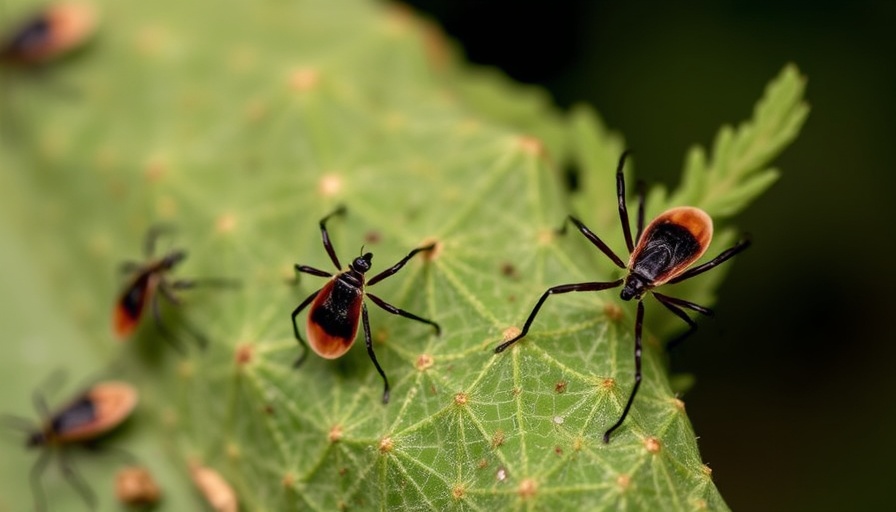
The Rise of Lone Star Ticks and Their Implications
An alarming phenomenon is taking shape across the United States: the explosive increase of lone star ticks, notorious for causing a rare meat allergy known as alpha-gal syndrome. These ticks, once confined to the southeastern states, are leveraging climate change to extend their territory, now reaching as far north as New York and Maine. Experts warn that if this trend continues, we may see an entire eastern US affected, potentially endangering millions with severe meat allergies.
Understanding Alpha-Gal Syndrome
Alpha-gal syndrome arises when individuals bitten by these ticks develop an allergy to a sugar molecule found in most mammals, making red meat consumption hazardous. Symptoms can be delayed, often surfacing hours after eating—a twist that makes diagnosis challenging. Brandon Hollingsworth, a researcher at the University of South Carolina, notes that the surge in cases—from just a handful a decade ago to potentially 450,000 documented today—suggests a significant public health issue at hand.
Climate Change: The Catalyst for Change
The increasing temperatures fueled by human-induced climate change are a critical factor in the tick’s expanding range. Laura Harrington, an entomologist from Cornell University, states that the ticks are adapting to new environments with astonishing speed. This adaptability means that areas once too cold for these invasive pests are now facing an onslaught. Homeowners, particularly in regions experiencing warmer climates, may need to consider measures to protect themselves and their properties from these creeping nuisances that also pose a health risk.
Community Response and Preventive Measures
The rise of lone star ticks calls for community awareness and engagement in preventive measures. Property investors and families need to remain vigilant, especially in outdoor settings where tick exposure is likely. Regular checks for ticks after outdoor activity, keeping the lawn trimmed, and utilizing tick-repellent products can help mitigate risks. Communities must come together to share strategies and support one another in addressing this emerging threat.
Possible Future Trends
As environmental conditions continue to shift, the opportunity for lone star ticks to thrive will only increase. This could lead to further geographic expansion and potentially more cases of alpha-gal syndrome. Understanding these risks allows families and homebuyers to make informed decisions about their properties and health policies. Discussions around how to foster sustainable environments, free from such health threats, are more critical than ever.
Final Thoughts and Call to Action
The dramatic uptick in lone star ticks and associated health risks underscores the necessity for both awareness and action within communities. Individuals considering property investments should take into account the relevance of sustainable landscaping and pest management practices. Stay informed and proactive; connect with local leaders on how best to tackle this issue head-on. Engage with experts, explore community-driven initiatives, and take charge of your living space today.
 Add Row
Add Row  Add
Add 





Write A Comment